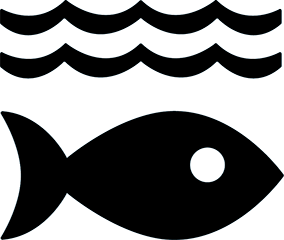Second Place - Middle School
UN Sustainable Development Goals Addressed
-

Goal 12: Responsible Production & Consumption
-

Goal 14: Life Below Water
-

Goal 15: Life on Land
2022 Youth Design Challenge
This design concept was developed by participants in the Institute’s Youth Design Challenge. The descriptions below are from the team’s competition entry materials.
School: Kalispell Middle School
Location: Kalispell, Montana, USA
Coach: Annie Gustafson, Ashley Anderson)
Team members: Brodyn Biologist, Jayson Aurand, Parker Elzig-Miller, Zavier Innerbichler
Video Pitch

Innovation Details
In Montana and similar winter-stricken cold environments, planes need to be de-iced. Chemicals used in deicing are hazardous to the environment and eventually flow into rivers, lakes, and groundwater. These chemicals harm the ecosystems and contaminate the water supply. The BioSurfaces team aimed to reduce the need for harmful chemicals used and came up with the idea of Ice Resistant Surfaces. They looked to inspiration from mint leaf surfaces with their tall peaks and valleys with angles in-between to stop ice formation. Going even further, a bumpy surface design emulated from the hydrophobic Cicada wings helps prevent frost, as well as bacteria, from building up. The team also found inspiration from pine needles, which are thick and covered with a waxy substance called cutin. Their design incorporated all three to make the BioSurface model, which can stop frost from developing on surfaces and can work on various surfaces.
What is the problem your team solved for this challenge? What is the problem addressed? How is the problem connected to the selected SDG?
De-icing chemicals used in ice melt are hazardous to animals, plants, and the environment. The U.S. spends 2.3 billion dollars yearly to remove ice from highways and even more to pay for the damages it causes. Here in northwest Montana, it is common that planes need to be de-iced. All these de-icing chemicals eventually flow into our lakes, rivers, and groundwater, harming our healthy ecosystems and contaminating our drinking water. Additionally build up of de-icing chemicals can make soil less permeable, contributing to floods and groundwater depletion. We chose to address reducing the need for these harmful chemicals.
How was your solution inspired by nature? What (at least two) organisms did you learn from? How effectively did you combine the biological strategies for the final design?
We were inspired to make frost resistant surfaces because we learned that salt on ice is harmful to dogs paws. Our biological model incorporates the traits from cicada wings, mint leaves, and pine needles. While the cicada wing appears flat, on a microscopic level the structure contains nano-pillars that pass water and ice over them. The mint leaves achieve a frost-reduction effect from millimeter tall peaks and valleys with small (40-60 degree) angles in between. We combined these special structures of these organisms and integrated lines mimicking the mint leaf and cicada wing through our model to test this idea.
What does your design solution do? How does it solve or mitigate the problem you selected? How did what you learn inform your design?
Our design solution allowed us to stop frost from developing on surfaces. With frost resistant surfaces like sidewalks, injuries and damage would decrease, as well as the reduction of harmful chemicals used in ice melt. For example ice melt contains multiple harmful chemicals that damage plants and animals. We learned that there are natural surfaces that exist in nature that repel water based on their structures. To make our design we incorporated the special structure of cicada wings, mint leaves, and pine needles to create a frost resistant surface.

